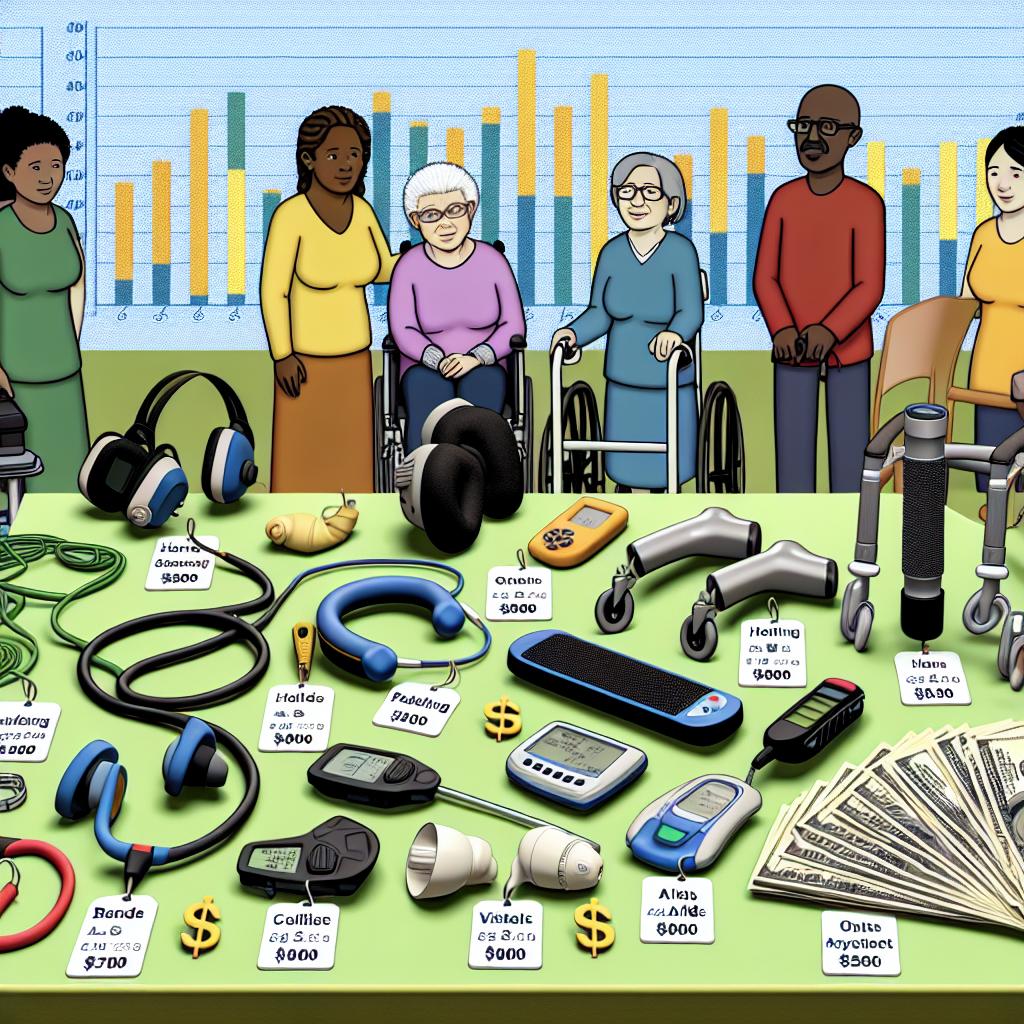Understanding the Cost of Assistive Technology
Assistive technology (AT) encompasses a wide range of devices and services designed to aid individuals with disabilities in performing tasks that might otherwise be challenging. These technologies play a crucial role in enhancing the quality of life for users, promoting independence, and facilitating participation in various aspects of daily life. However, the cost associated with acquiring and maintaining assistive technology can be substantial.
The price of assistive technology can vary significantly based on the type and complexity of the device. For instance, simple items such as grab bars or magnifiers may be relatively inexpensive, whereas complex devices like powered wheelchairs or communication devices can be costly. Additionally, customized solutions tailored to specific individual needs often come with a higher price tag due to the specialized design and manufacturing processes involved.
Factors Influencing Costs
Several factors influence the cost of assistive technology, and understanding these can help individuals and caregivers make informed decisions.
Type of Technology: Basic adaptive equipment is generally less expensive compared to high-tech devices that incorporate advanced features. Simple devices, such as canes, walkers, or basic hearing aids, tend to be more affordable. On the other hand, sophisticated technology such as speech-generating devices, electronic mobility aids, or comprehensive sensory equipment can require significant investment.
Customization Needs: The extent to which a device must be customized to accommodate specific user requirements can affect pricing. Tailored solutions often necessitate specialized production techniques, individual fitting, and sometimes bespoke design, which all contribute to higher costs. This contrasts with generic devices that might be mass-produced and widely available.
Brand and Manufacturer: Prices may vary between different brands and manufacturers, with well-established names often commanding higher prices. While opting for a reputable brand can offer assurance of quality and reliability, it may also result in a higher upfront expense. Evaluating the reputation and performance reviews of different brands can help in assessing whether the cost premium is justified.
Additional Expenses
The expense associated with assistive technology is not limited to the initial purchase. Several additional costs should be anticipated:
Maintenance and Repairs: Regular maintenance is crucial to ensure the functionality of assistive devices. Complex electronic devices, in particular, require periodic checks and updates. Repairs, though sometimes unforeseen, are part of the lifecycle of any technology, adding to the long-term financial commitment.
Training: Proper training is essential for users to maximize the benefits of assistive technology. Training costs can vary, depending on the complexity of the device and the user’s familiarity with technology. Comprehensive training may involve hands-on sessions, tutorial resources, and ongoing support to ensure that users can comfortably and efficiently operate their devices.
Funding Options for Assistive Technology
Acquiring assistive technology can be financially challenging, but several funding options exist to assist individuals in obtaining the necessary devices and services.
Government Programs
Various government programs offer financial assistance or coverage for assistive technology. For individuals in the United States, programs such as Medicare and Medicaid provide funding for specific types of medical equipment and services. These programs often have specific eligibility requirements, making it essential for applicants to understand the criteria and processes involved in seeking assistance. Applicants should also be aware that coverage may not be comprehensive, potentially covering only a portion of the costs involved.
Insurance Coverage
Private insurance plans may cover a portion of the costs associated with assistive technology. Reviewing policy details with an eye for specifics regarding AT coverage is crucial. Insurance coverage might include particular devices or services, and understanding the extent of this coverage can aid in financial planning. Additionally, reaching out to policy providers with questions can clarify any ambiguities regarding coverage, exemptions, and eligibility criteria.
Non-Profit Organizations
Numerous non-profit organizations offer grants or financial aid to individuals in need of assistive technology. These organizations often focus on specific disabilities or target populations, helping to bridge the gap between need and affordability. The application process for these grants can vary—some might require detailed personal and financial information, while others could need a demonstration of the potential benefit of the assistive technology. Examples of support channels might include national disability-specific organizations, local community services, or philanthropic foundations.
Employer and Educational Support
Employees or students may also explore the possibility of receiving assistance from their employers or educational institutions. Some workplaces or schools provide resources or funding to accommodate the needs of individuals requiring assistive technology. Workplaces might offer these resources as part of their commitment to accessibility and inclusivity, thus enhancing the working conditions for employees who make use of AT. Similarly, educational institutions can support students by providing necessary technologies, thereby facilitating their learning experiences and academic success.
Charitable and Community Initiatives
Beyond structured funding avenues, local community groups and charitable initiatives can offer financial support or even donate used equipment. Community-based programs may organize events, fundraisers, or drives to raise funds or gather resources. Participation in these initiatives can foster a sense of community and collaboration, focusing collective efforts on accessibility and inclusion for all community members.
Conclusion
The cost of assistive technology can present a significant barrier, but understanding the available funding options can help alleviate financial challenges. By exploring government programs, insurance options, and support from non-profit organizations, individuals can gain access to the essential tools they need to enhance their quality of life and enhance their independence. Expanding the search to include employer and educational support, as well as tapping into community and charitable resources, can open up further possibilities for securing the needed technology. While the financial aspect is a critical consideration, it is equally important to stay informed about advancements in assistive technology and potential avenues for support. This dual focus can ultimately empower individuals, enabling them to overcome challenges and lead fulfilling lives with the assistance of appropriate and effective technologies.
